"Mr. Parker, do you know what it means to feel like God?" |
Dr. Moreau offers a personal challenge to creationism |
I fell in love with film horror at an early age, initially through furtively grabbed TV screenings of those genre-defining Universal films of the 30s and 40s. Although likely the target of mockery for younger modern day CG junkies, these films still have a very special hold for me. There's something about their age, the flickering monochrome and frame instability, the hiss on the soundtrack and its lack of pin-sharp clarity and bass, the expressively lit monochrome images, that sense of a reality pulled from the darker corners of my subconscious – for me this was mainstream surrealism before I was old enough to know what surrealism was. These are films that provided me with some of my most vivid childhood memories: the first appearance of Karloff's iconic Frankenstein monster; Dracula's first urgent response to the spilling of Renfield's blood; the archaeologist driven mad by the sight of a mummified figure shuffling out of his tomb ("He went for a little walk!"); the ominous warning given to Lawrence Talbot by Bela Lugosi's gypsy; a wide-eyed Renfield crawling towards a fainted nurse; Claude Rains unravelling his bandages to reveal there was nothing but air beneath.
As soon as I could afford to do so I started buying books about these films, which in turn provided me with a list of new titles to track down and see. Of course back in these pre-internet and pre-home video days, before I was old enough to nip up to London and make the Scala cinema my second home, this meant waiting for them to show up on late night TV. Some of them never did. Having been seduced by production stills and enthusiastic description, there were three films I'd have done just about anything to see but simply could not. The first I later discovered was forever out of my reach for the simple reason that the film is no more, lost to the ravages of cultural indifference and a fire in the film vault at MGM Studios. On the basis of a single production photo of London Chaney flashing a demonic, shark-toothed smile, London After Midnight is a film that every horror fan continues to dream will be unexpectedly rediscovered. And it has a fearsome reputation. This was, after all, the first film to be blamed for prompting a violent crime, when a man charged with the murder of a woman in Hyde Park claimed in his defence that Chaney's performance was so terrifying that it drove him temporarily insane. That only made me even more eager to see it.
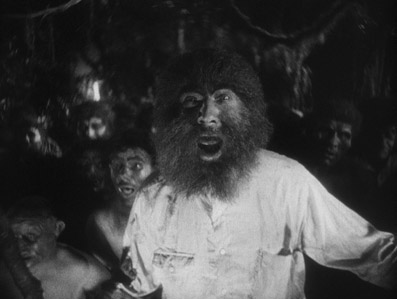
The other two on the list were every bit as impossible for a young lad to see, having both been subject to long-term bans in the oh-so-sensitive UK. Banned films have always had a rather special appeal for horror fans, as the moment someone in a position of bureaucratic authority tells us that we can't see a film we become desperate to hunt it out. And despite the fact that bans on both films were now lifted, TV stations were not exactly falling over themselves to screen them. Both were made in 1932, just before the the repressive effect of the Production Code really began to bite. The first was Freaks, directed by Tod Browning, the man who had brought Bram Stoker's Dracula to the screen and effectively paved the way for future Universal horror films before the term horror film had even been coined. The second was Island of Lost Souls, an adaptation of H.G. Wells' 1896 novel The Island of Dr. Moreau and directed by Erle C. Kenton, a former Max Sennett actor turned prolific director who previously specialised in comedy two-reelers and features. I fell for both the moment I laid eyes on their oft-reprinted production stills, and reading their synopses only sealed the deal. By the time I got to see them, several years later, I suspected I was in for a bit of a let down. I mean, how could any film live up to the insanely high expectations I had built up for Freaks? It actually surpassed them. And I saw it at the aforemention Scala cinema on an extraordinary double-bill with Eraserhead, a film I was at that time embroiled in a passionate and obsessive love affair with. At the very same cinema a few months later, Island of Lost Souls was paired with James Whale's divine Bride of Frankenstein. It was in far from pristine shape, but by then I'd been waiting so long to see it that the damage, dust spots, fluffy sound and missing frames all seemed to add to the sense that I was watching forbidden material. And it haunted me. Coming back to it so many years later I still can't put my finger on why, but I was still left with the impression that I'd witnessed something I was never meant to see. It's that particular sensation that you only really get from pre-1940 horror cinema, where just about everything about the way it looks and sounds feels like something from another world, one shaped by our dreams and stoked by our nightmares.
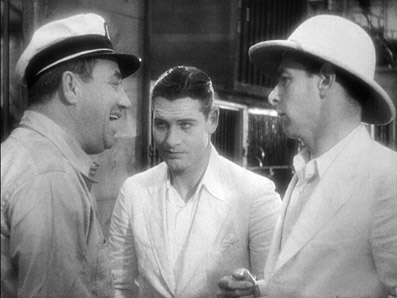
Time, familiarity and the evolving nature of what constitutes screen horror has inevitably softened the sting of these early genre works. What was once terrifying can seem quaint or amusing to an audience raised on the more graphic and extreme horrors of today. Thus when we sit down in front of an eighty year-old film we do not really expect to be startled or disturbed, and so when they succeed in doing so the effect is starkly amplified. Which is part of the reason that the opening sequence of Luis Buñuel's 1928 Un Chien Andalou remains one of the single most shocking images in cinema history. Island of Lost Souls still disturbs in its own way, but kicks off in less confrontational fashion when an exhausted and malnourished Edward Parker is found floating in a lifeboat by a trading ship crew. He's nursed back to health by a former doctor named Montgomery (Arthur Hohl), but his presence is a surprise to the ship's hard-drinking captain, who's pissed off at having to transport a cargo of wild animals to an island with no name and that's not on the charts. When the captain assaults Montgomery's strangely animalistic servant, the upright Parker responds by punching him out. On Montgomery's advice Parker stays out of sight, but when the ship unloads its cargo, the captain retaliates by tossing Parker overboard, depositing him on the boat of Mongomery's mysterious employer, Dr. Moreau.
In that hyper-efficient way with scene setting that films of this period had down to a tee, the entire above paragraph occupies just thirteen minutes of waste-free screen time, and even includes a scene set back on dry land in which Parker is listed as missing and his worried fiancée Ruth gets his telegram from him informing her that he has been rescued and that he'll be with her in a couple of days. This now looks a little unlikely, of course. And then again, maybe not. Against expectations, Moreau offers Parker the use of his boat and crew to transport him to his original destination the very next day. Although grateful for the offer, Parker is a tad trepidatious about the make-up of the crew, all of whom have the features and gait of men who have not quite completed the evolutionary process.
On reaching the island, Moreau invites Parker to spend the night at his house, much to Montgomery's surprise and alarm. The journey there takes them through caves and dense jungle growth, during which they encounter a good many more of these animalistic men, whom Moreau sends scuttling with a crack of his whip. After treating him to dinner, Moreau introduces Parker to the exotic Lota (pronounced Loh-tah), whom he claims is Polynesian and the only woman on the island, then steps discreetly outside to observe what transpires. Lota has apparently never met a man she does not fear – that's Moreau and Montgomery basically – and is instantly enamoured with this kind and good-looking stranger. Moreau is called away before nature can take its probable course, and the tryst is interrupted by a terrible scream that exposes Parker to the island's terrible secret, that Moreau is attempting to bypass the evolutionary process by vivisecting wild animals in a surgery known fearfully as The House of Pain.
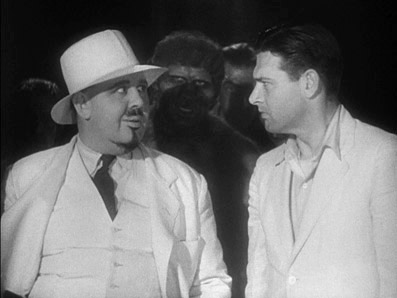
It's clear from an early stage that Parker has been cast as the audience identification figure, the everyday Joe whose task it is to be horrified and threatened on our behalf. But in common with the leading men of a fair few genre films of the period, our Parker is a little too straight laced for a more cynical modern audience (well, this bit of it at least) to easily side with. In the name of convention we do, of course, but from the moment we meet Moreau it's clear who the real star of this particular story is. Sure, villains are always more interesting than clean-cut heroes, particularly one so morally up tight that he'd rather expose his fiancée to potential danger than share a bedroom with her before they are married. And Moreau may be an egomaniac with a scant regard for the suffering of others, but he's both interesting and entertaining, and it's when he's on screen that the film catches fire. For this we can thank the decision to cast an up-and-coming star named Charles Laughton as Moreau. A consistently marvellous actor whose only film as director is now rightly regarded as a bona-fide classic (you don't really need me to name it, do you?), Laughton is even this early in his career keenly aware of just how much or how little is required when performing for the camera. Slyly infusing his civility with menace, his politeness even in the face of Parker's angry threat to expose him (rather than self-righteously respond, he calmly offers his visitor a cup of tea) that of a man supremely confident of his abilities and power. It's a disarmingly modern performance, one peppered with the sort of creative touches and little bits of business that were rare enough anywhere in the post-silent era and almost unheard of in the horror works of the period.* He's a delight to watch and listen to here, enlivening even more functional dialogue with his witty delivery – his mock surprise at finding that his boat has been wrecked is a delicious example of suppressed amusement, and why stand still when discussing your work when you can wander the room and flop down mid-sentence like an exhausted diva on a surgical couch?
The influence of Freaks is hard to ignore (Browning's horror classic was released earlier the same year), particularly given the two films' shared fascination with human deformity, which Moreau both exploits and then challenges by questioning the still widespread willingness to make snap judgements based on appearances alone. The island inhabitants are certainly presented as initially sinister, not for their actions but because they skulk in the shadows and diverge so dramatically from the commonly held concept of idealistic norm, which is represented by Parker and his pretty young fiancée Ruth, who inevitably becomes the object of leering desire for the predominantly male populace. But our sympathies soon shift when Parker discovers the truth about Moreau's work – the scream let out by the creature being operated on is horribly authentic – and a short while we are shown that the hold Moreau has over his creations (whose hirsute spokesman is played by Bela Lugosi) is that of a dictator ruling over an oppressed and fearful populace, who are kept in line by three laws designed to protect Moreau and control the animal instincts of his subjects: not to run on all fours, not to eat meat and not to spill blood. It's a metaphor that's carried to its logical conclusion when these very laws are turned against their creator in a climax that startles through what it suggests rather than shows. And startle it still does; back in 1932 I'll wager it prompted an unprepared audience's blood to run cold.
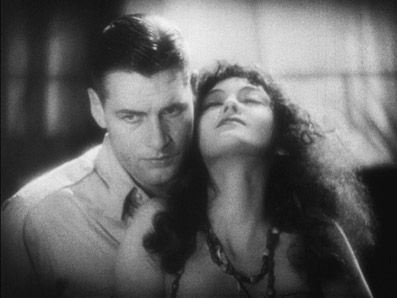
It's doubtless scenes like this that prompted the censors to ban the film from British screens for an astonishing twenty-five years, though I can't help but suspect that the flagrant sexual advances made by Panther Woman Lota (played by Kathleen Burke with an appropriate blend of innocence and seduction) to an initially tempted Parker and the bestial overtones of their potential union are what led to the official complaint that the film was "against nature," to which actress Elsa Lanchester, then Laughton's wife, famously responded, "Of course it's against nature. So's Mickey Mouse".** Wells himself was apparently delighted by the ban, having made no secret of his intense dislike for the film, and if you're a fan of the novel you may well baulk at its watering down of the author's more complex scientific and philosophical theorising, which effectively transforms a science fiction story in to a film that few would have trouble categorising as horror.
But judged purely on its own merits, Island of Lost Souls is a standout genre work from the pre-Hays Code period, one smartly enough made to make you wonder why the prolific Earl Kenton did not work more often in this once maligned genre (his other key contributions were the briskly made but conceptually weak multi-monster movies House of Frankenstein and House of Dracula). Here he does his material proud, making atmospheric use of sea fog and the jungle location, employing neatly executed crane shots to follow character movement and provide sweeping reveals, and having the confidence in Wally Westmore's consistently excellent make-up to allow Moreau's creations run at the camera into confrontational close-up (I'll just be the British censors loved these shots) without exposing their fakery. It's a seductive, imaginative and still unsettling work with a haunting conclusion, a lovely central performance, and a real sense that Kenton and his talented cast and crew were enthusiastically pushing the censorial envelope. And for a rarely screened cult film from 1932, it's had a surprising impact on modern pop culture, providing Irish-American hip-hop group House of Pain with the name of their band and the post-punk band Devo with the title of their first album. It was also apparently the original source of the phrase "the natives are restless", but in true "play it again, Sam" fashion, the actual quote differs from the oft-repeated trope.
Despite the advances made in digital restoration in recent years, you can't help lowering your expectations for a long-banned and rarely screened film of this vintage. Yet while the results fall short of the near-pristine standard set by the likes of the Masters of Cinema release of M – the picture is not as crisp, the film grain is more pronounced and the contrast range a tad less subtle at both ends – the results are still impressive, particularly considering the original negative has been lost and that three different prints (a 35mm fine-grain master positive, a 35mm nitrate positive, and a 16mm screening print) were used to reconstruct the film. There is some inevitable variance in image quality (the 16mm frame size is, after all, roughly a quarter of that of its 35mm equivalent) and the sort of minor contrast flickering is common in films of this age, but the image is stable and free of dust and blemishes, and at its best the level of detail justifies the HD transfer – when Parker examines Mongomery's punched-out servant, the hair on his animal ear is very clearly defined. The contrast and brightness are pitched about right given the restrictions of the source material, boasting generally solid blacks and decent shadow detail, and there's an attractive glow to the brighter whites, very likely the result of master cinematographer Karl Struss's use of diffusion filters. This is, it should be noted, the most complete version of the film yet released in the UK.
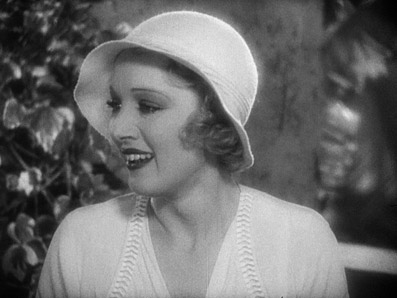
The DTS-HD Master Audio 2.0 mono soundtrack, like the picture, remastered and restored from the best available elements from the three source prints. The inevitable range restrictions are both expected and appropriate (somehow a pristine surround track would be completely wrong here), and the dialogue and effects are always clear and distortion free. The background hiss, though audible, is rarely intrusive.
Simon Callow (12:26)
Celebrated actor and Laughton biographer Callow (the book in question, Charles Laughton... A Difficult Actor, is a fine read, by the way) discusses Laughton's approach to acting and his performance in Island of Lost Souls from a number of interesting angles – including the idea that also works a parable on colonialism – and speculates on how might have played had it been directed by Jean Cocteau.
Jonathan Rigby (14:30)
Film critic and historian Jonathan Rigby (author of American Gothic: Sixty Years of Horror Cinema – also a worthy read) charts in engaging detail the timeline from the birth of the American horror movie to the release and UK banning of Island of Lost Souls, which he describes as the most transgressive horror film of its era.
Trailer (1:30)
The original trailer kicks off with the the names of the key cast members, who include Bela "Dracula" Lugosi and "The Panther Woman". The trailer itself reveals just enough to be best saved for after the first viewing of the film itself.
Booklet
Star of the show here is an almost booklet-long article on the film by genre specialist Kim Newman, which is backed by some quality production stills (including some remarkable make-up effects that didn't make it to the screen), credits for the film, and a double-page photo of a theatre hoarding promoting its original release.
What a wonderful but unexpected choice for a Masters of Cinema Blu-ray release. It's always lovely when a fondly remembered film lives up to your memories, and Island of Lost Souls certainly does that. Despite the liberties it takes with Wells' novel, even eighty years after its original release it remains far and away the best film adaptation of it, and stands as one of the key horror works of the early sound era. With no original negative to work from, the restoration team have done a really fine job, and the extra features are nicely targeted. Warmly recommended.
* One other such performance that does come to mind is Ernest Thesiger's glorious supporting role in Bride of Frankenstein.
** From Charles Laughton and I by Elsa Lanchester.
|